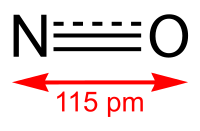
Photo from wikipedia
A band structure description of the observed large band gaps and moments in both the antiferromagnetic (AFM) and paramagnetic (PM) phases of the classic NaCl-structure Mott insulators MnO, FeO, CoO,… Click to show full abstract
A band structure description of the observed large band gaps and moments in both the antiferromagnetic (AFM) and paramagnetic (PM) phases of the classic NaCl-structure Mott insulators MnO, FeO, CoO, and NiO is provided by ordinary, single-determinant density functional theory method. As noted by previous authors, the ordered AFM phases already show in band theory significant band gaps. However, for the disordered PM phases the commonly used band model has been to assume the macroscopically observed, averaged NaCl structure, where all transition metal sites are forced to be symmetry-equivalent (a monomorphous description); for the PM phase this forces zero moment on an atom by atom basis, thus producing a gapless PM state, in sharp conflict with experiment. Instead, we allow larger NaCl-type supercells where each TM site can have different local bonding and spin environments (a polymorphous description) and thus the geometric flexibility to acquire symmetry-lowering distortions that lower the total energy and can break the symmetry of the d orbitals. The existence of a distribution of different local spin and bonding environments allows large on-site magnetic moments to develop spontaneously in the DFT+U calculations leading to significant (1-3 eV) band gaps in the AFM, FM, and PM phases of the classic Mott insulators MnO, FeO, CoO, and NiO. We adapt to the spin disordered configurations in the PM phases the "special quasi-random structure" whereby supercell approximants which represent the best random configuration average for finite supercells of a given lattice symmetry are constructed. Thus, avoiding a monomorphous description of the disordered magnetic phases allows even ordinary DFT+U, which represents the N electron system with a single-determinant wavefunction, to describe the gapping not only in the AFM phases but also in the PM phases of MnO, FeO, CoO, and NiO.